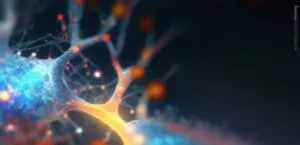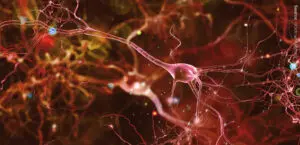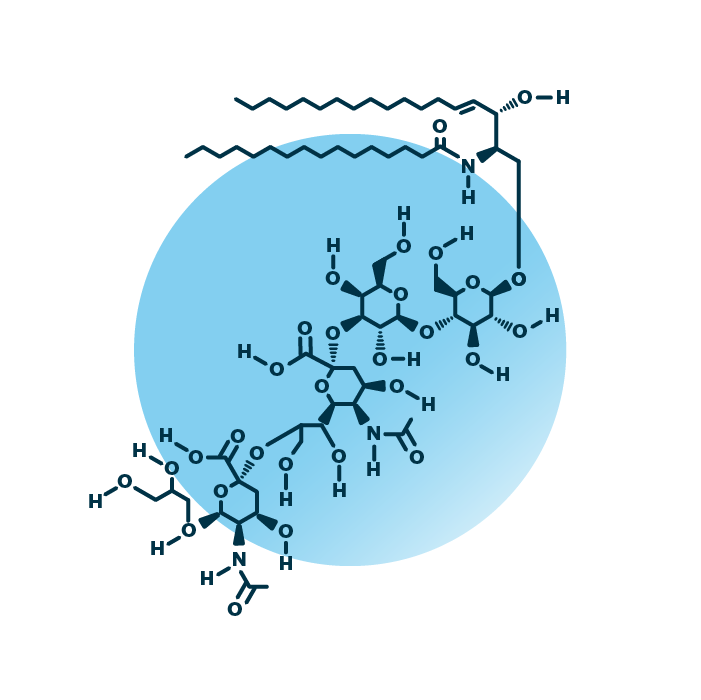About the structure and biological function of GD3
Structure. GD3 ganglioside lipids belong to the group of gangliosides within the sphingolipids. Their structure consists of a ceramide backbone linked to an oligosaccharide unit made of four sugar molecules. Two of them are sialic acid. The ceramide backbone contains two hydrocarbon chains: a long-chain base which is linked to a fatty acid via an amide bond. The fatty acid and the long-chain base can be of variable length, hydroxylated, and contain double bonds.
Function. GD3 gangliosides are fundamental in neurogenesis. They bind to the EGF receptor resulting in the activation of a signaling cascade promoting cell proliferation. This is essential for stem cell self-renewal in the brain. GD3 lipids are critical for apoptosis and autophagy, programmed cell death and cellular “self-eating”. They also serve as precursors of more complex gangliosides. Further, GD3 levels are elevated in melanomas and neuroblastomas, and they are the main gangliosides in early human breast milk.


